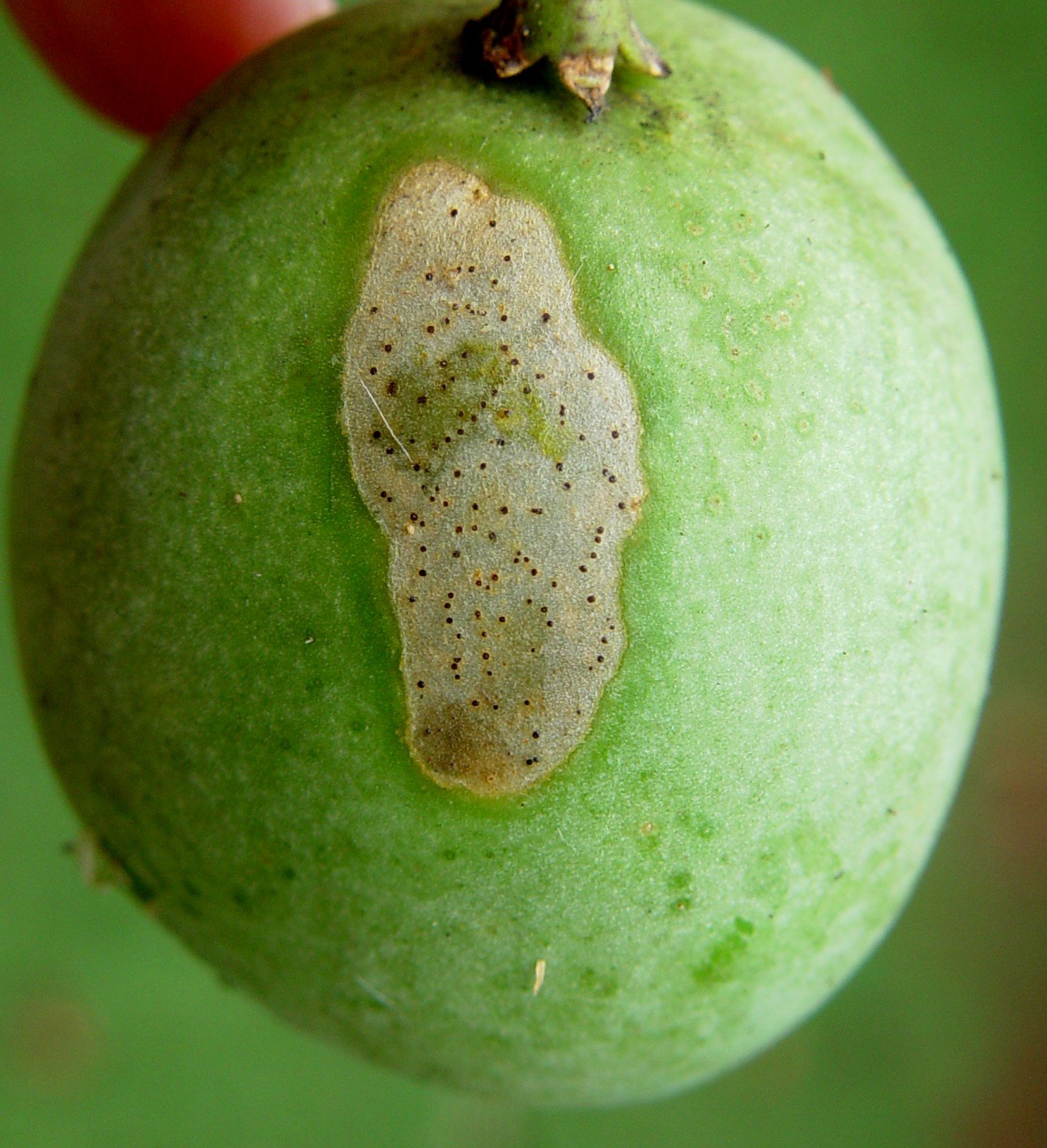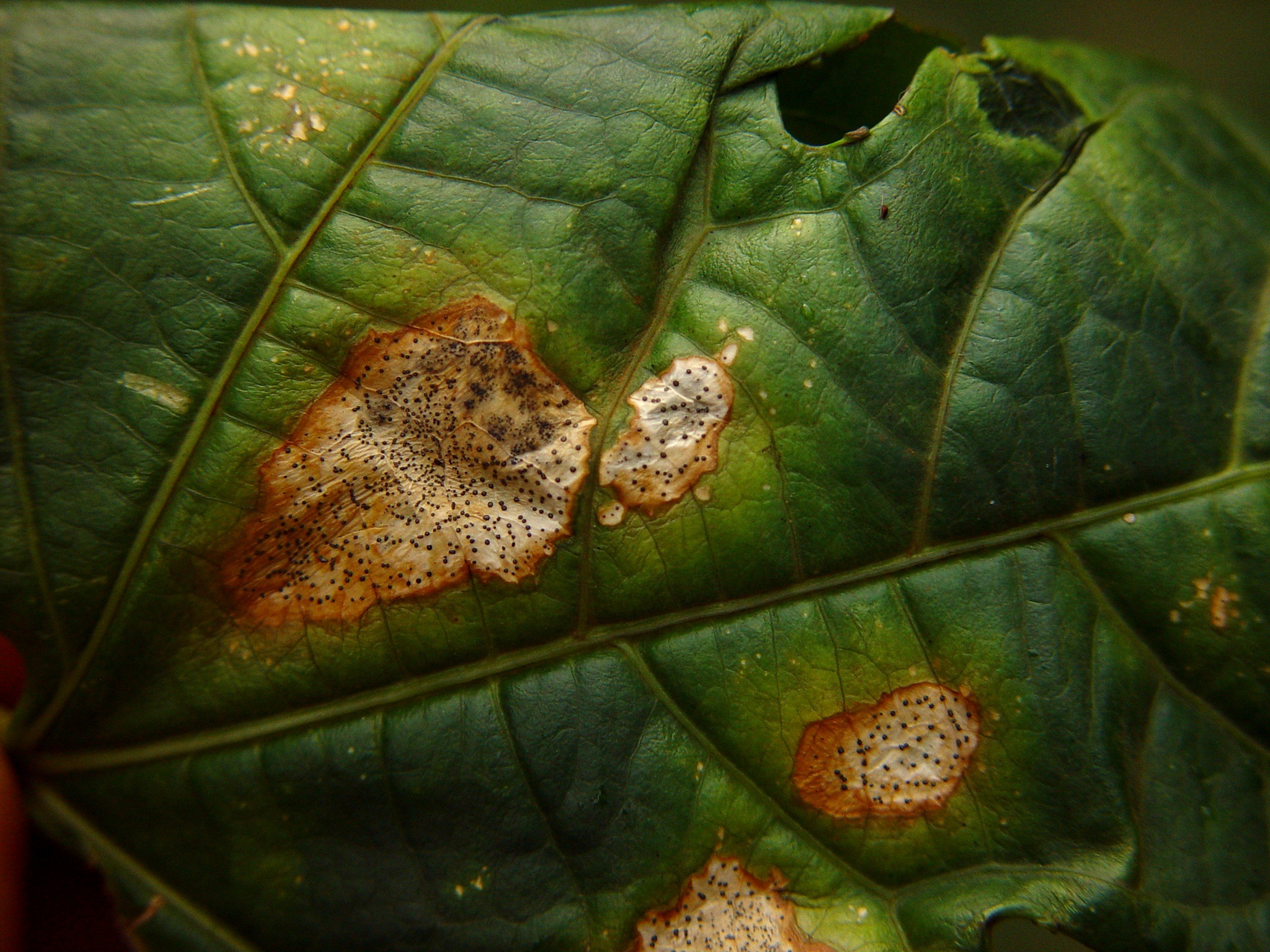(Septoria passiflorae)
Credits: Biovision-Infonet

(c) A.M. Varela, icipe

(c) A.M. Varela, icipe
The disease attacks leaves, stems and fruits. Brown spots up to 2 mm with minute, black dots (fruiting bodies containing fungal spores) develop on leaf surface.
Infected leaves fall readily leading to defoliation of vines. Similar spots may form on the stems albeit elongated.
On fruits light-brown spots studded with minute black dots may be formed. The spots often join up to cover large areas of the fruit. Affected fruits ripen unevenly.
Spores produced by black dots (fruiting bodies) are blown to adjacent vines during wet, windy weather thus further spreading the disease.
The disease is spread by rain, dew and overhead irrigation. Warm moist weather favours disease development.
What to do:
- Disease management measures for brown spot disease (see above) are equally applicable for Septoria spot.